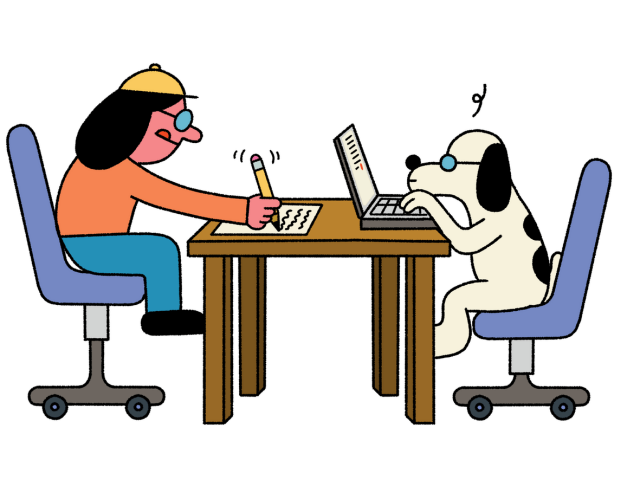NewsWise values
This lesson focuses on all of the NewsWise values.
Learning objective
To inform and engage an audience (first draft).
Reporters should aim to write news reports that are truthful, fair, balanced and interesting. They must use the evidence that they have collected during interviews and within their research. They also have to meet their deadline!

This lesson focuses on all of the NewsWise values.
To inform and engage an audience (first draft).
Write a first draft of a news report, using the structural and language features of news reports.
Explain how a news report meets the four NewsWise values.
Evaluate a peer’s news report, providing feedback on the language and structural features used.
Pupils spend five minutes reviewing their pyramid plan, to remind themselves of the order of information in their reports, while also referring to their original news report plans for detailed information.
As a class, recap the structural and language features of news reporting. How will you begin your news report? Which information will you include in the middle section? How many quotes will you include? How will you end your report? What do you need to remember about using paragraphs in news reports?
Pupils write the first draft of their news reports, using the planning sheets which they created in previous lessons.
Give pupils deadlines throughout the session to replicate the newsroom experience. You may wish to split the sections of the report into separate tasks with a deadline for each one, eg: 5W introduction; quotes and reported speech from interviews; additional research on the topic; final paragraph.
Refer back to the class News report toolkit, as well as the Model news reports and News reporting language word banks from lesson 11 to support pupils to write in an authentic news report style and structure.
See Creating a newsroom for further ideas on how to create a newsroom in your classroom.
Note: pupils do not need to add ‘page furniture’ at this point - this happens in lesson 15.
Pupils share their news reports with a partner, providing feedback to each other based upon the following questions: which language features have they included in their news report? Have they begun their news report with a 5 W introduction? Have they included interesting information? Have they started a new paragraph for every new point? Is the news report balanced? Do you think it is a truthful and fair report? Why?
What is the purpose of your news report?
Who is your audience?
What do you need to include in your news report?
How will you make sure that your news report is truthful, fair, balanced and interesting?
In this lesson, pupils write the first draft of their news reports (without the ‘page furniture’).
Conduct the lesson as a writing lesson, in line with your usual practice. Remind pupils of the structural and language features of news reporting by referring to your class’s ‘news report toolkit’.
Use success criteria to remind pupils of the key features of a news report, including: inverted pyramid structure - beginning with the most important information, moving on to additional interesting details and quotes, finishing with what might happen next/similar stories that have happened before/a really good quote that sums up the story; 5 Ws introduction, starting with Who or What, not When; short paragraphs; concise, formal language; written in the third person and past tense; reported and direct speech; relative clauses.
Writing
Selecting appropriate form, grammar, vocabulary and punctuation; using paragraphs to structure ideas; building cohesion
Reviewing and editing writing
Peer-editing
If you are finishing the NewsWise project here, it's time to put your pupils' skills to the test! Our short, online quiz checks their fake news detective skills and asks some more questions about what they've learned along the way.
Click the button below or share this link with your class: bit.ly/pupilpostnw2425
Not finished yet? Keep going to the next lesson! You'll find the quiz in the plenary of lesson 15.
Complete the teacher survey too and you'll get a link to the quiz answers, so you can share these with your class. (We recommend completing the teacher survey shortly before, while, or soon after pupils complete their quiz, so you can share the answers with them in the same lesson.)
We'd love to see your pupils' finished news reports! Email them to us at newswise@theguardianfoundation.org - we might be able to publish them on our website!